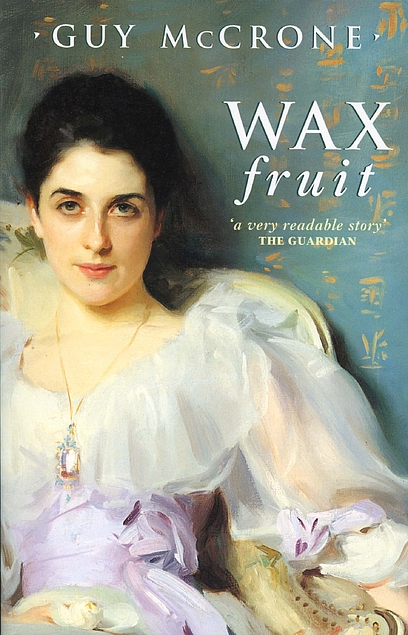Black &White, 1993, 208 p. In Wax Fruit. First published 1947.
 Wax Fruit is a trilogy of novels set in the Glasgow of the late nineteenth century. Antimacassar City is the first in the sequence.
Wax Fruit is a trilogy of novels set in the Glasgow of the late nineteenth century. Antimacassar City is the first in the sequence.
We are dealing with the saga of the Moorhouse family, originating from an Ayrshire farm in the mid-1800s, though the setting is mainly Glasgow in the 1870s. The youngest Moorhouse, Phœbe, is the result of her father’s second marriage, to a Highland woman, and the book’s first scene describes the night she was orphaned by an accident. Phœbe is portrayed as a restrained, self-possessed girl and, later, young woman. Her older (half)-brother Mungo is the only one of the family left at the farm, the others have moved to Glasgow and are going up in the world. Her brother Arthur’s wife Bel determines to take her in, even though she is expecting their first child.
Phœbe takes a sisterly interest in the child, Arthur, when he is born. A few years later a maid, taking a shortcut home from a visit to his grandmother, loses him in a slum area when distracted by her sister’s presence there. On her own initiative and though still a child Phoebe sets out to find him, braving the shocking – and frightening – conditions of the overcrowded slums, and earns Bel’s everlasting gratitude for his rescue. McCrone’s attitude to the slum dwellers, couched through the middle-class values of the upwardly mobile Moorhouses, is disparaging and dismissive. They are depicted as depraved and dissolute; there is, it seems, nothing to redeem them.
The rest of the book deals mainly with Bel’s attempts to persuade her husband to move out of the city centre to the more salubrious West End and Mungo’s surprising attractiveness to Miss Ruanthorpe of Duntrafford, the local Big House in Ayrshire.
Henry Hayburn, tongue-tied except when enthusing about steam engines and engineering and a friend of another of Phœbe’s brothers, develops on sight a yearning for her. She is less enthusiastic but his family’s exposure to ruin in the collapse of the City Bank of Glasgow brings out her protective side.
The prose here is efficient but fails to spark. Elements of this are a bit like the works of Margaret Thompson Davis (though of course McCrone was published much earlier) but Davis’s attitude to the poor was more empathetic. But she was portraying the honourable poor.
As a cursory representation of Glasgow (a certain echelon of Glasgow) in the mid-Victorian age this is a good enough primer. Literature, though, it is not.
I still have two instalments to go. Maybe it will improve.
Pedant’s corner:- “Gilmour Hill”, “Kelvin Bridge” (1870s designations? now Gilmourhill and Kelvinbridge,) “‘you’ll can move out to the West’” (‘you’ll move out to the West’ or ‘you can move out to the West’,) missing commas before pieces of direct speech. “‘What way, can she not stay at the farm?’” (no need for that comma, it’s not two phrases,) “begging at he door” (at the door.) “Had she been unhappy here she was?” (where she was.) “Sophia as only too prompt” (was only too prompt,) missing quote marks around one piece of speech, “she turned way” (turned away,) “a coil of barbed wire lying rusty and hidden” (Barbed wire was only invented in 1873. There would hardly have been time for it to have been used on an Ayrshire estate and left to rust.)

















































 Wax Fruit is a trilogy of novels set in the Glasgow of the late nineteenth century. Antimacassar City is the first in the sequence.
Wax Fruit is a trilogy of novels set in the Glasgow of the late nineteenth century. Antimacassar City is the first in the sequence.